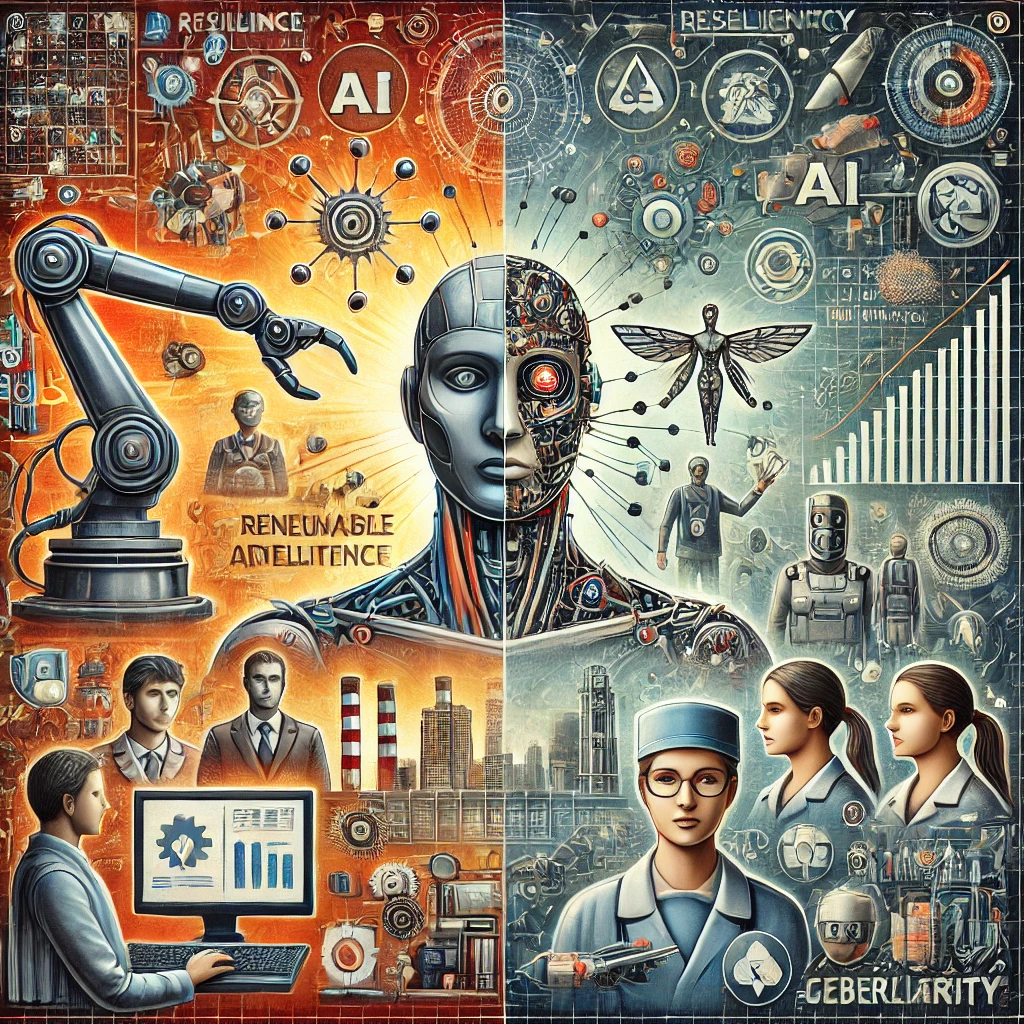
Artificial Intelligence (AI) is no longer a futuristic concept; it’s reshaping industries and redefining the global workforce. According to the World Economic Forum’s (WEF) Future of Jobs Report, AI-driven automation is expected to significantly impact employment patterns worldwide. Here’s an updated look at how these changes are unfolding and what they mean for businesses, governments, and individuals.
Workforce Reductions and Transformations
The report reveals a startling prediction: 41% of companies globally plan to reduce their workforce due to AI automation. However, this isn’t just a story of job losses. Alongside workforce reductions, 170 million new jobs are expected to be created by 2030, while 92 million jobs may be displaced. The evolving landscape emphasizes the dual nature of AI—both as a disruptor and as a catalyst for innovation.
Demand for AI and Human Skills
While AI, big data, and cybersecurity skills are becoming indispensable, human-centric abilities remain critical. Skills like creative thinking, resilience, flexibility, and agility are essential to navigating this transformation. These human capabilities complement technological advancements, ensuring businesses maintain a competitive edge in an AI-driven world.
Emerging Opportunities in Specialized Fields
AI advancements, coupled with progress in robotics and renewable energy systems, are driving demand for specialists in these sectors. High-growth fields include:
- Renewable Energy Engineering
- Environmental Technology
- Cybersecurity
- AI Development and Design
Conversely, roles in sectors like cashiering, administrative assistance, and even graphic design face declines as generative AI tools reshape the job market. This highlights the need for workers in at-risk roles to pivot toward skill sets aligned with emerging opportunities.
Care and Education Jobs: A Rising Demand
Demographic trends are fueling a surge in essential roles, particularly in care and education sectors. The report identifies significant growth in demand for:
- Nursing Professionals
- Healthcare Assistants
- Secondary School Teachers
These jobs are less likely to be automated and remain vital for addressing societal needs.
Bridging the Skills Gap
Till Leopold, Head of Work, Wages, and Job Creation at WEF, underscores the urgency of collective action: “Trends such as generative AI and rapid technological shifts are upending industries and labour markets, creating both unprecedented opportunities and profound risks. The time is now for businesses and governments to work together, invest in skills, and build an equitable and resilient global workforce.”
The report emphasizes that 70% of companies plan to hire workers with skills in designing AI tools and enhancements. This highlights a shift in priorities, with organizations increasingly valuing adaptability and technical expertise.
Call to Action: Investing in Skills
The WEF urges governments, businesses, and educational institutions to take urgent, collective action. This includes:
- Reskilling and Upskilling Programs: Initiatives to help workers transition into roles that align with the demands of the future workforce.
- Accessible Pathways to Growth: Creating inclusive opportunities for individuals to enter fast-growing sectors.
- Collaborative Efforts: Governments and businesses must partner to bridge skills gaps and invest in scalable training programs.
Conclusion
The integration of AI into the workforce presents a complex mix of challenges and opportunities. While automation may displace certain roles, it also paves the way for innovation and the creation of entirely new career paths. By embracing adaptability, fostering collaboration, and investing in future-ready skills, we can build a resilient and inclusive workforce that thrives in the era of AI.
Be First to Comment